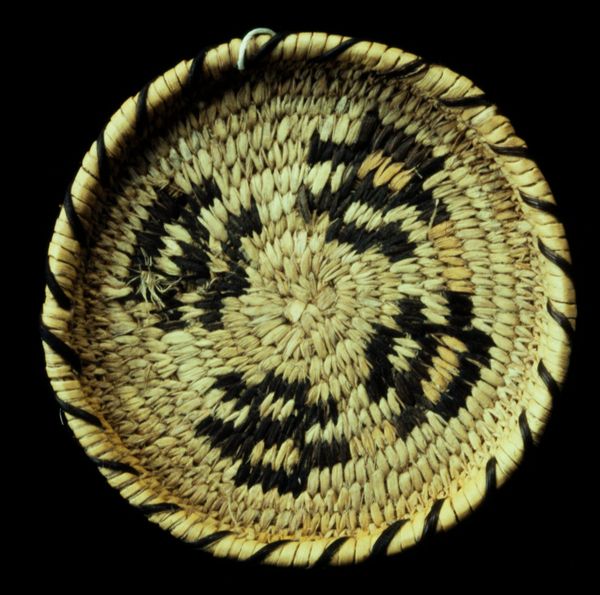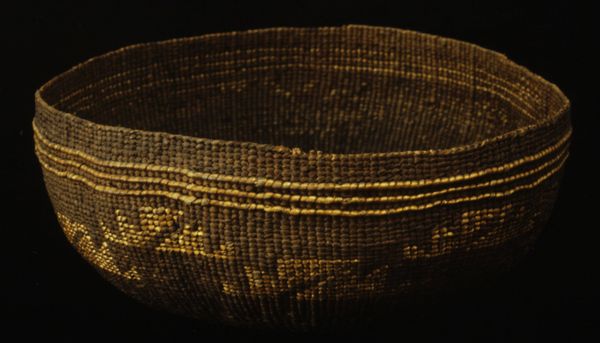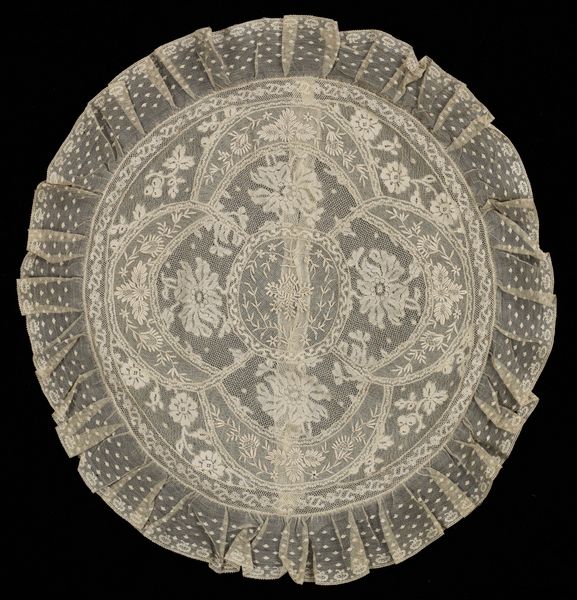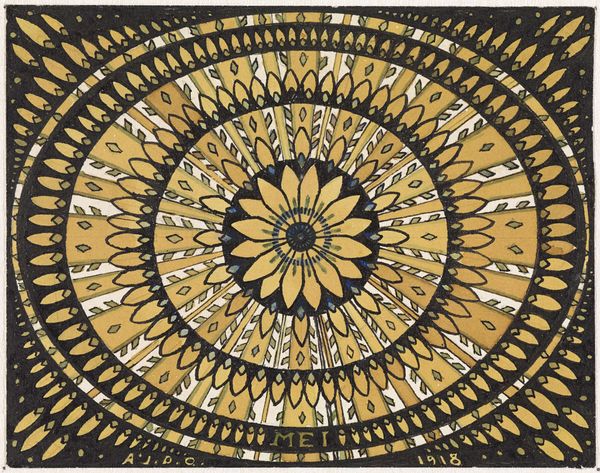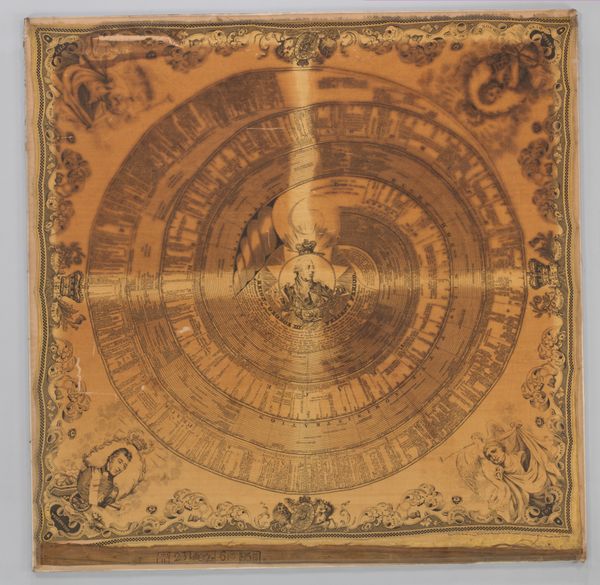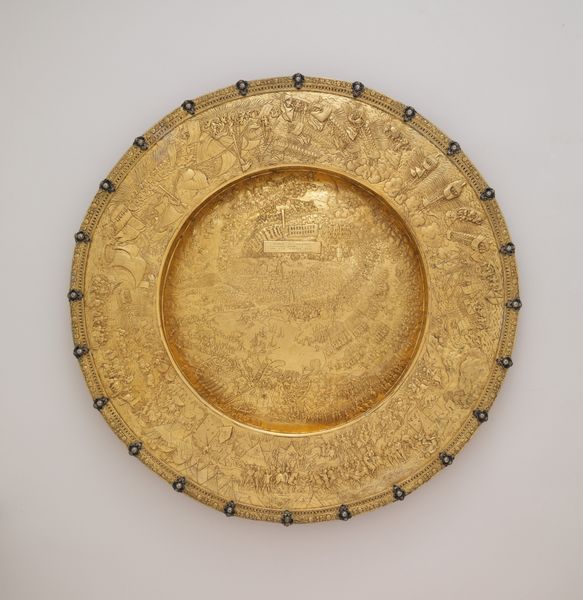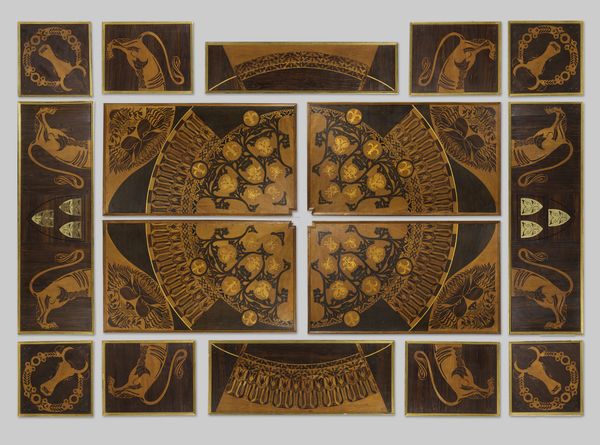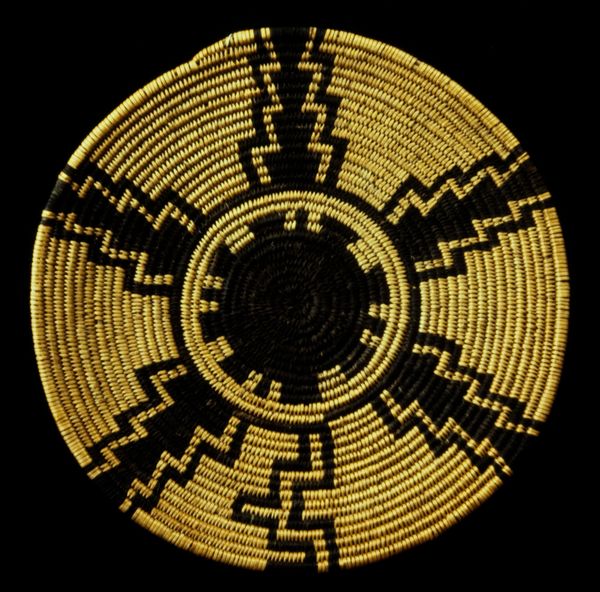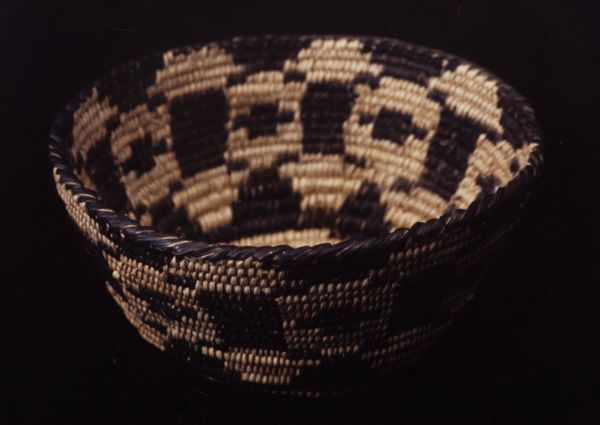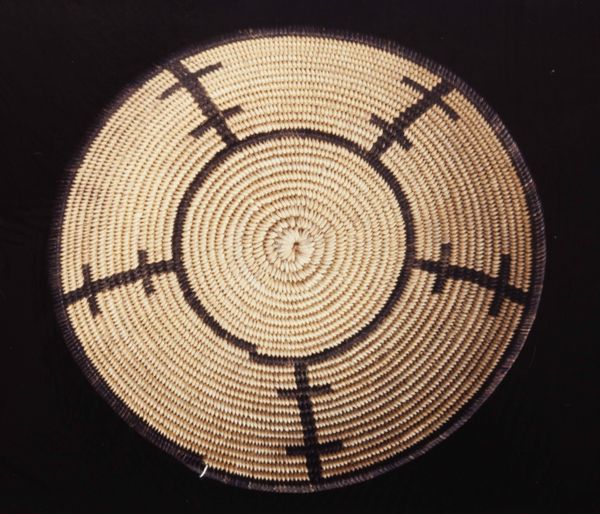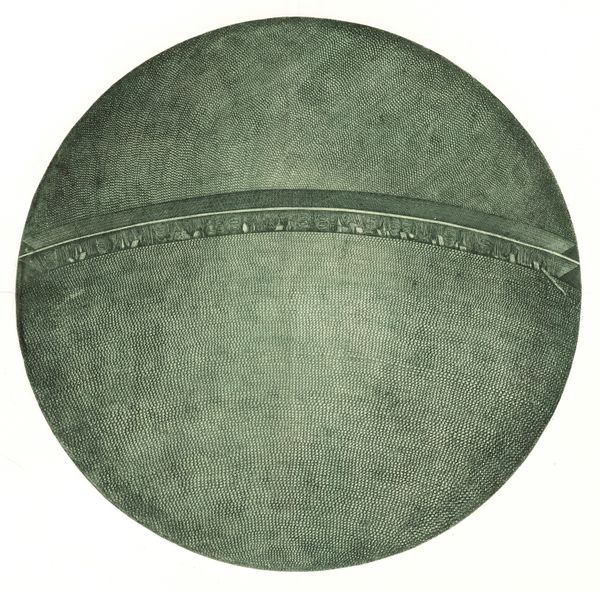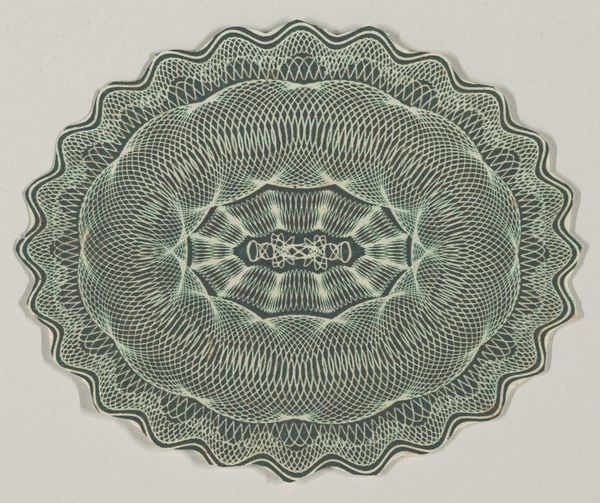
fibre-art, weaving
#
fibre-art
#
weaving
#
geometric
#
indigenous-americas
Dimensions: 14.25 x 14.25 in. (36.2 x 36.2 cm)
Copyright: Public Domain
Curator: At first glance, it reminds me of looking into the night sky through a telescope. A swirling, earthy galaxy, meticulously rendered. Editor: That’s a beautiful image, quite poetic. Let me offer some context: what you're observing is a “Basket” made by the Tohono O’odham people, dating roughly to the 20th century. It resides here at the Minneapolis Institute of Art. The materials are textile fibers, incredibly woven into these geometric shapes. Curator: Woven indeed! I find myself completely lost in the sheer labor involved. Can you even begin to imagine how many hours of focused concentration and manual dexterity? It's more than just a vessel; it's a tangible record of time itself. The shapes… are they abstract representations or do they symbolize something specific within the Tohono O’odham culture? Editor: Likely both! It's in the nature of visual symbols to be multivalent. Indigenous communities across the Americas often encode complex narratives within geometric patterns, especially in textiles and basketry. There may be clan symbols, representations of nature— rain, mountains, the desert— or even cosmogonic maps illustrating their understanding of the universe. These seemingly simple geometric shapes are pregnant with ancestral knowledge. Curator: I feel a powerful connection to that idea, that knowledge is embedded in form. Consider the spirals—they resonate universally with concepts of growth, the cycles of life, evolution. Everything starts at a center point and expands outwards, the structure, and patterns represent this phenomenon that crosses many cultures, which this basket demonstrates to me. Editor: The beauty here lies precisely in that interplay: the specific cultural coding, known fully only to the Tohono O’odham themselves, meeting these archetypal forms that stir something deep within our collective human consciousness. It reminds me that objects like these are so much more than simple “crafts.” They’re sophisticated systems of communication, carrying stories across generations. Curator: Exactly. It invites reflection not only on the object itself but on how symbols retain and communicate identity. What visual language would we use today to achieve the same profound level of connection to heritage? Editor: A sobering, and frankly daunting, thought. Well, I'll leave our listeners with that challenge— perhaps while seeking out other examples of Tohono O’odham artistry in museums.
Comments
minneapolisinstituteofart almost 2 years ago
⋮
Willow, cottontail, and black martynia or devils claw, are the main materials used to sew baskets of the Akimel O’othom and Tohono O’odham. The availability of these plant fibers in the environment aide in identifying differences between the two tribes’ baskets. The Akimel O’othom who live along the river and few streams have easy access to willow and cottontail, which is reflected in their designs being predominantly black patterns on a white background. The Tohono O’odham, who live in the desert where black martynia is more abundant, predominantly use a black background with white designs.
Join the conversation
Join millions of artists and users on Artera today and experience the ultimate creative platform.

